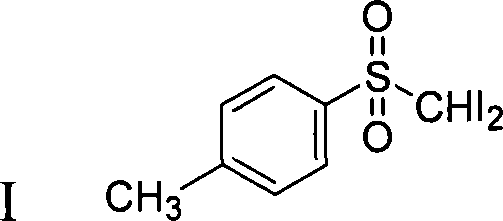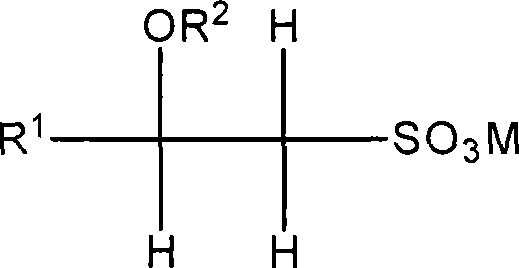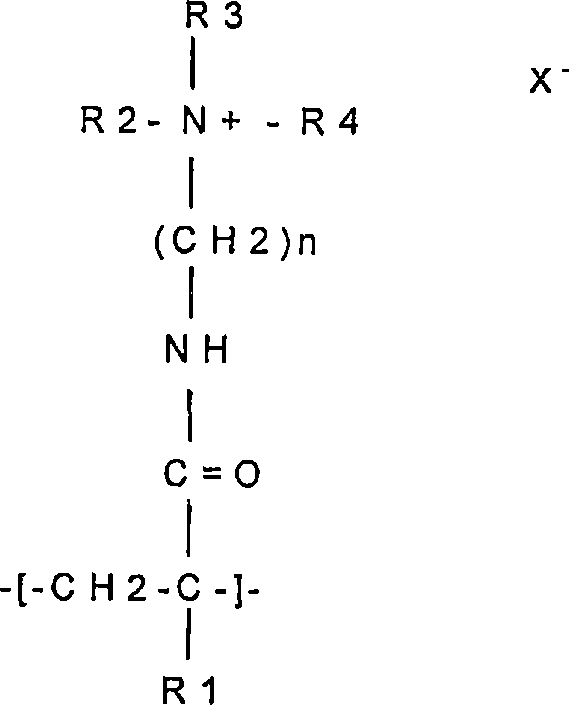Diiodomethyl-p-tolylsulfone as a particulate dispersion in a liquid solvent
A tolyldiiodomethyl sulfone, dispersion technology for use in dandruff, compositions for the treatment of bacterial and fungal infections on the skin or scalp, in the field of topical fungal mediated conditions
- Summary
- Abstract
- Description
- Claims
- Application Information
AI Technical Summary
Problems solved by technology
Method used
Image
Examples
preparation example Construction
[0230] L. Methods of making shampoo compositions
[0231] The compositions of the present invention can be prepared by any known or otherwise effective technique suitable for providing antimicrobial compositions, provided that the resulting compositions provide the superior antimicrobial benefits described herein. Methods for preparing the anti-dandruff and conditioning shampoo embodiments of the present invention include conventional formulation and mixing techniques. Methods such as those described in US Pat. No. 5,837,661 can be used, wherein the antimicrobial, fungicide or anti-dandruff actives of the present invention typically can be combined with a silicone premix in the same step as described in US Pat. No. 5,837,661 join in.
preparation Embodiment 1 to 22
[0233] The following is a suitable method for preparing the antimicrobial shampoo compositions of Examples 1 to 22 (below):
[0234] About one-third to all of the sodium laureth sulfate (added as a 29% by weight solution) and acid are added to a jacketed mixing tank and heated to about 60°C to about 80°C with slow stirring. °C to form a surfactant solution. The pH of this solution is from about 3 to about 7. Sodium benzoate, cocamide MEA and fatty alcohol (if applicable) were added to the tank and allowed to disperse. Ethylene glycol distearate ("EGDS") was added to the mixing vessel and allowed to melt (if applicable). After the EGDS was melted and dispersed, Kathon CG was added to the surfactant solution. The resulting mixture was cooled to about 25°C to about 40°C and collected in a final tank. As a result of this cooling step, the EGDS crystallizes to form a crystalline network (if applicable) in the product. The remaining sodium laureth sulfate and other ingredients,...
preparation Embodiment 23 to 31
[0314] The following is a suitable method for preparing the antimicrobial cleaning compositions in Examples 23 to 31 (below):
[0315] Mix components 1 through 3, 6 and 7 while heating to 88°C (190°F). In a separate tank, components 4, 9, 12 and 14 were mixed at room temperature. After the first mixture had reached 88°C (190°F), it was added to the second mixture. After the mixture had cooled below 60°C (140°F), component 10 was added. In a separate vessel, combine petrolatum and diiodomethyl-p-tolylsulfone at 71°C (160°F). After the aqueous phase has cooled below 43°C (110°F), add the petrolatum / diiodomethyl-p-tolylsulfone and stir until homogeneous. With or without the aid of a dispersant, diiodomethyl-p-tolylsulfone can be added to the surfactant premix or to water, by conventional powder incorporation and mixing techniques, into the cooled mixture. Add the spices last.
[0316]
components
Example
twenty three
Example
twenty four
...
PUM
| Property | Measurement | Unit |
|---|---|---|
| particle size | aaaaa | aaaaa |
| particle size | aaaaa | aaaaa |
| size | aaaaa | aaaaa |
Abstract
Description
Claims
Application Information
 Login to View More
Login to View More - R&D
- Intellectual Property
- Life Sciences
- Materials
- Tech Scout
- Unparalleled Data Quality
- Higher Quality Content
- 60% Fewer Hallucinations
Browse by: Latest US Patents, China's latest patents, Technical Efficacy Thesaurus, Application Domain, Technology Topic, Popular Technical Reports.
© 2025 PatSnap. All rights reserved.Legal|Privacy policy|Modern Slavery Act Transparency Statement|Sitemap|About US| Contact US: help@patsnap.com



